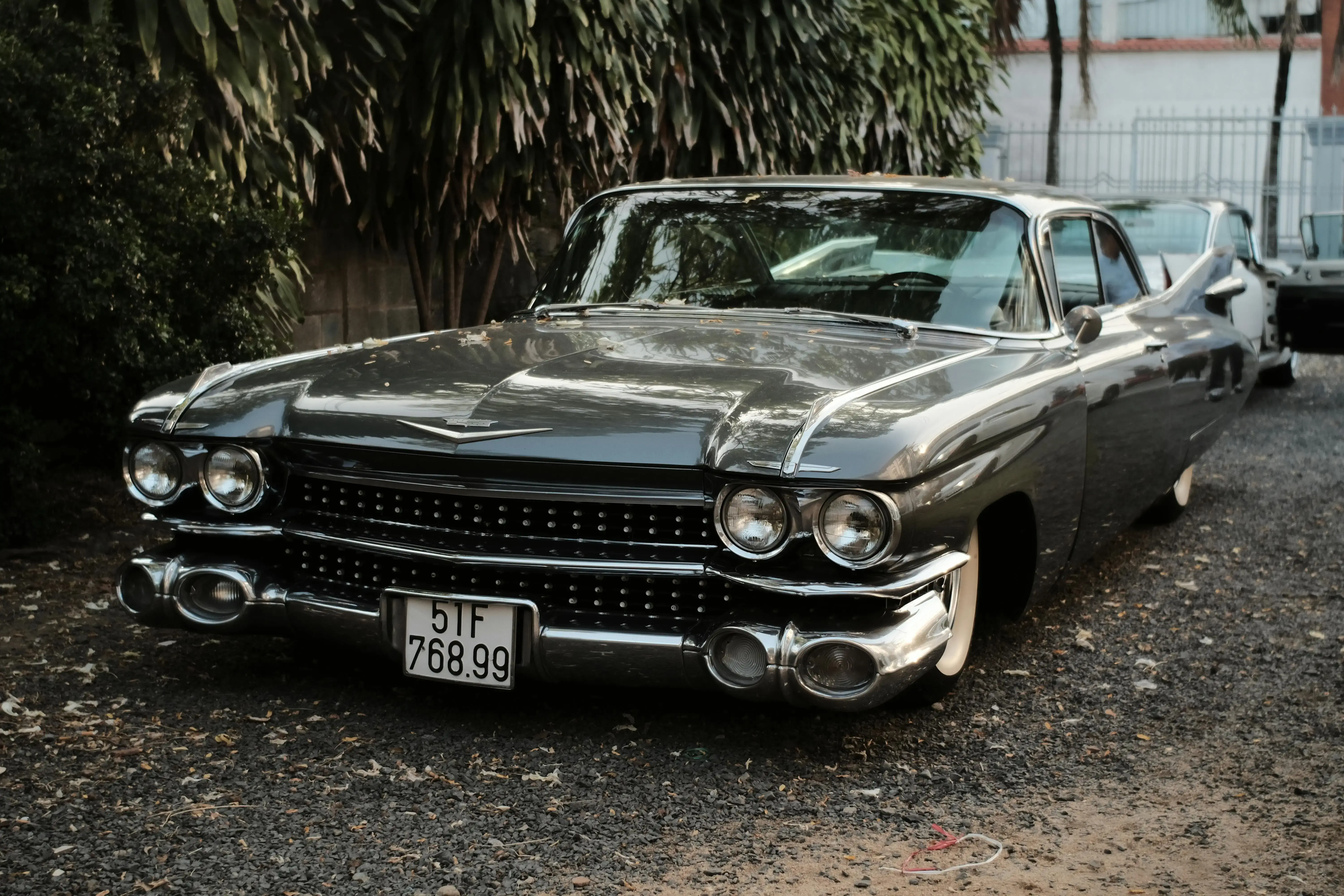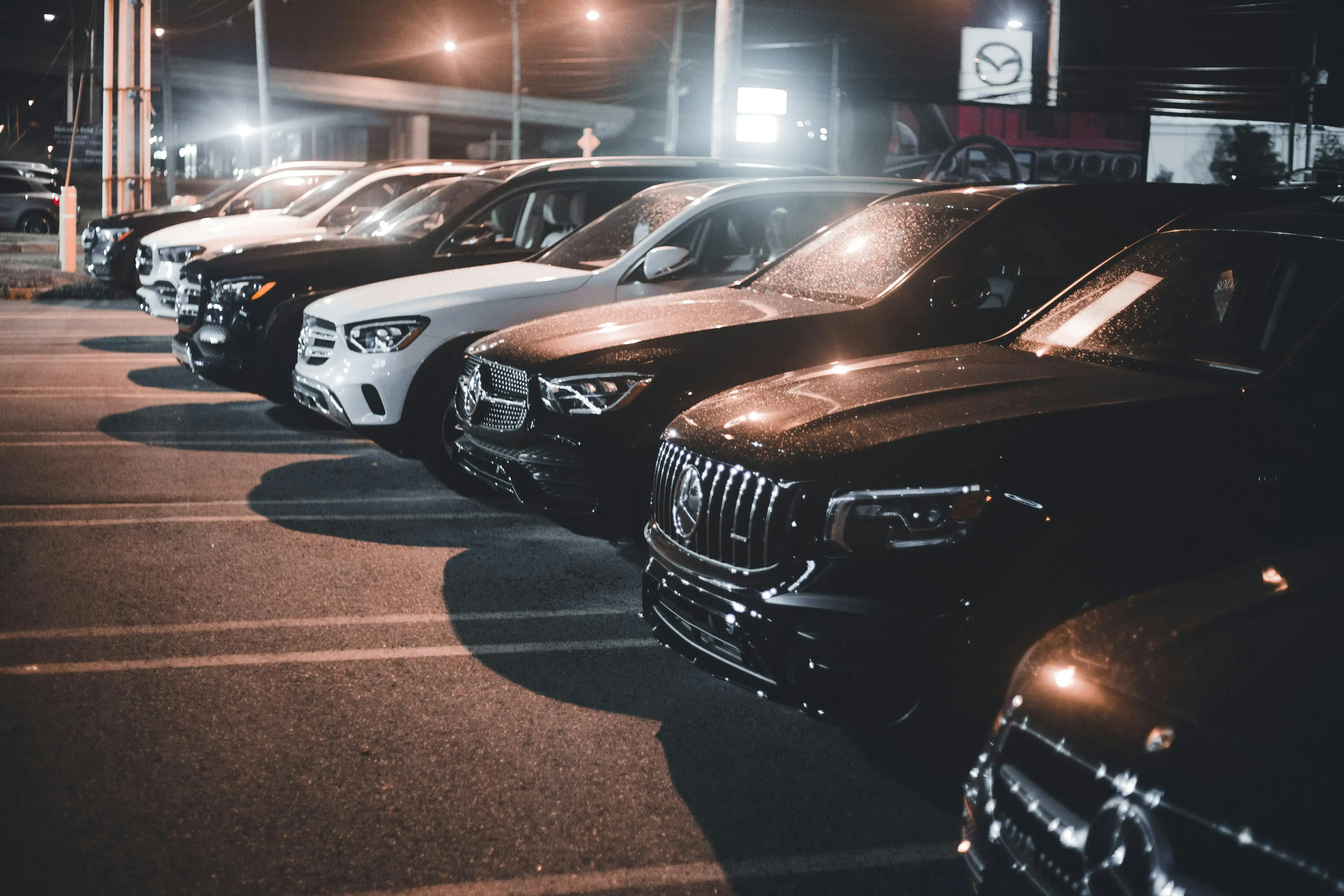Complete Guide to Shipping Cars to Panama: Methods, Costs & Timelines
Shipping a car to Panama from the United States involves critical decisions affecting costs, transit times, vehicle protection, and ultimate success of your import operation. Whether you're relocating with a personal vehicle, importing a classic collector car, establishing dealer operations, or coordinating fleet movements, understanding Panama's specific import requirements, shipping method advantages, and realistic timeline expectations enables informed planning and successful outcomes.
West Coast Shipping specializes in U.S.-to-Panama vehicle transport with nearly two decades of experience coordinating thousands of successful imports through Port of Cristobal. Our comprehensive services span container shipping, air freight coordination, complete documentation handling, customs clearance support, and transparent pricing from our California, Florida, and New Jersey facilities. This complete guide addresses the most common questions about shipping cars to Panama, covering classic vehicle eligibility, shipping method comparisons, and detailed week-by-week timeline expectations.
Can I Ship Classic or Collector Cars to Panama?
Classic and collector vehicle imports to Panama present unique challenges beyond standard vehicle shipping—understanding age restrictions, special permit requirements, and practical considerations enables realistic planning for classic car enthusiasts and collectors.
Panama's Age Restriction Framework
Panama generally restricts vehicle imports to relatively recent models, though the exact enforcement varies and creates confusion among importers.
Standard Age Limitation: While official regulations sometimes present conflicting information, de facto enforcement typically limits mainstream passenger vehicle imports to 10 years or newer from manufacturing date. This guideline applies to standard cars, SUVs, and light trucks used for regular transportation.
Manufacturing Date Importance: Panama customs evaluates age based on manufacturing date (not model year)—a 2016 model year vehicle manufactured in late 2015 may face different treatment than one built in early 2016.
Enforcement Variations: Age restriction enforcement occasionally varies by vehicle type, origin, specific customs officer interpretation, and whether vehicles qualify for classic status.
Want to learn more about classic vehicle regulations? Check out our in-depth guide on how to ship classic cars to Panama in 2025, including age limits, import permits, and special exemptions for vintage models.
Classic Vehicle Import Pathways
Limited exceptions may exist for vehicles exceeding standard age limits when qualifying as classics or collectibles—though requirements remain complex and subject to discretionary approval.
Classic Status Qualifications:
-
Age Threshold: Vehicles typically 25+ years old may qualify for classic consideration
-
Historical Significance: Documentation proving historical importance or collectible value
-
Collectible Registry: Registration with recognized classic car organizations
-
Original Condition: Well-maintained original condition or professional restoration documentation
Special Permit Requirements:
-
Additional permits beyond standard import documentation
-
Approval from Panama authorities demonstrating classic status
-
Potential inspections verifying claimed condition and value
-
Higher taxes and fees even when permits granted
Professional Appraisals: Classic vehicle imports often require professional appraisals establishing vehicle value, condition, and historical significance—supporting permit applications and customs valuations.
Classic Car Import Challenges
Beyond permit complexity, classic vehicle imports face practical considerations affecting feasibility and costs.
Higher Import Costs:
-
Classic vehicles may face elevated duty rates (15-25% of CIF value)
-
7% ITBMS tax applies to duty-inclusive valuations
-
Potential luxury taxes on high-value classics
-
Special permit fees and processing charges
Parts Availability Concerns: Classic American vehicles often require parts unavailable in Panama—consider long-term maintenance challenges when importing older vehicles requiring specialized components.
Registration Requirements: Classic imports must still pass Panama ATTT safety and emissions inspections, though standards for older vehicles may differ from modern requirements.
Market Value Considerations: Limited classic car market in Panama versus U.S. or European markets—consider resale implications if planning future vehicle disposition.
West Coast Shipping Classic Car Services
Our experience shipping classic vehicles provides specialized support addressing unique requirements.
Documentation Assistance: Guidance on gathering historical significance documentation, appraisals, and classic registry materials supporting permit applications.
Protected Shipping: Enclosed container protection preventing salt exposure, weather damage, and handling risks during transatlantic transport.
Customs Coordination: Experienced customs broker partnerships understanding classic vehicle import nuances and permit requirements.
Learn more about our complete Panama shipping services including classic vehicle specialization.
Air Freight vs Ocean Freight to Panama: Which is Right for You?
Choosing between air freight and ocean freight represents the most fundamental shipping decision affecting costs, timelines, and service level—understanding each method's advantages enables optimal selection for your specific situation.
Air Freight: Speed and Premium Service
Air freight delivers unmatched speed for time-critical shipments where urgency justifies premium pricing.
Air Freight Characteristics:
-
Transit Time: 3-10 days total door-to-door delivery
-
Speed Priority: Fastest available international shipping method
-
Premium Pricing: Typically 2-3x ocean freight costs
-
Global Access: Service to major Panamanian airports
-
Climate Control: Protected cargo holds throughout journey
Need faster delivery or comparing shipping methods? Check out our article on Air Freight vs Ocean Freight to Panama for a detailed breakdown of cost, speed, and when each option makes sense.
When Air Freight Makes Sense:
Time-Critical Situations:
-
Emergency vehicle replacements for business operations
-
Event participation with fixed setup deadlines
-
Auction deliveries requiring precise timing
-
Corporate relocations with urgent timelines
High-Value Vehicles:
-
Exotic supercars and luxury vehicles exceeding $100,000
-
Classic collectors requiring minimal handling exposure
-
Racing vehicles for competition events
-
Prototype or pre-production vehicles
Security-Sensitive Shipments:
-
Vehicles with proprietary technology
-
Custom modifications requiring confidential treatment
-
Limited production models avoiding extended exposure
Air Freight Cost Structure: Pricing calculated based on vehicle dimensions and weight—compact vehicles like Porsche 911s may cost $8,000-15,000 while larger SUVs range $13,000-18,000+ for Panama delivery.
Ocean Freight: Cost-Effective Standard Solution
Ocean container shipping provides cost-effective, secure transport serving the vast majority of Panama vehicle imports.
Ocean Freight Characteristics:
-
Transit Time: 5-13 days ocean voyage (port-dependent) plus processing
-
Cost Efficiency: Most economical method for standard vehicles
-
Complete Protection: Sealed containers prevent weather/salt exposure
-
Flexible Scheduling: Weekly departures from multiple U.S. ports
-
Volume Capacity: Accommodates any vehicle volume
Ocean Freight by Departure Port:
New York to Cristobal:
-
Cost: $2,750 per vehicle
-
Transit: 6 days ocean voyage
-
Best For: Northeast U.S. origins, most economical option
Florida to Cristobal:
-
Cost: $4,475 per vehicle
-
Transit: 5 days ocean voyage (fastest ocean option)
-
Best For: Southeast U.S. origins, regional convenience
California to Cristobal:
-
Cost: $4,400 per vehicle
-
Transit: 13 days via Panama Canal
-
Best For: West Coast origins, Pacific routing
When Ocean Freight Makes Sense:
-
Standard passenger vehicles, SUVs, and light trucks
-
Cost-sensitive imports where timing flexibility exists
-
Dealer inventory shipments (multiple vehicles)
-
Non-operational or project vehicles (air freight cannot accommodate)
-
Shipments including spare parts or equipment alongside vehicles
Cost-Benefit Analysis Framework
Air Freight Justification Calculations:
-
Compare air freight premium ($8,000-16,000) versus ocean freight ($2,750-4,475)
-
Evaluate time value: does 3-6 week faster delivery justify $5,000-15,000?
-
Consider business opportunity costs of delayed delivery
-
Assess vehicle value: high-value vehicles better justify premium protection
Ocean Freight Value Proposition:
-
40-60% cost savings versus air freight for standard vehicles
-
Complete protection equivalent to air freight during transit
-
Accommodation of non-running vehicles and additional cargo
-
Proven reliability with weekly departure schedules
Decision Matrix: Most Panama imports utilize ocean container shipping due to optimal cost-protection balance—reserve air freight for genuinely time-critical or ultra-high-value situations justifying premium costs.
RoRo vs Container Shipping to Panama: Which is Better?
Roll-on/Roll-off (RoRo) and container shipping represent alternative ocean freight methods—understanding each approach's advantages determines optimal selection for your vehicle type and priorities.
Container Shipping: Preferred Method for Standard Vehicles
Container shipping dominates U.S.-Panama vehicle transport providing superior protection, flexibility, and value for standard passenger vehicles.
Container Shipping Advantages:
Complete Weather Protection:
-
Sealed steel containers prevent salt spray, rain, sun exposure
-
Critical for Panama's tropical climate and extended ocean exposure
-
Maintains vehicle condition throughout journey
Security Benefits:
-
Tamper-evident seals prevent unauthorized access
-
Minimal handling (loaded once, unloaded once)
-
Reduced theft risk versus open deck exposure
Non-Running Vehicle Accommodation:
-
Professional loading equipment handles inoperable vehicles
-
No requirement for vehicles to start, steer, or brake
-
Project cars and restoration candidates eligible
Cargo Consolidation:
-
Additional parts, equipment, spare wheels can ship alongside
-
Properly declared on customs documentation
-
Single shipment versus separate cargo arrangements
Consolidation Economics:
-
Multiple vehicles share 40-foot containers
-
Per-vehicle costs reduced 40-60% versus dedicated containers
-
West Coast Shipping optimizes consolidation reducing client costs
RoRo Shipping: Oversized Vehicle Alternative
RoRo service exists primarily for large or oversized vehicles exceeding standard container dimensions—not a cost or convenience advantage for standard passenger vehicles.
Not sure which shipping method fits your vehicle? Check out our article on RoRo vs Container Shipping to Panama for a full comparison of protection, cost, timelines, and which vehicles qualify for each method.
RoRo Appropriate Applications:
-
Commercial trucks and buses exceeding container door heights
-
Construction equipment and heavy machinery
-
Agricultural vehicles and specialized equipment
-
Extra-tall lifted trucks or extended-length vehicles
RoRo Limitations for Standard Vehicles:
No Cost Advantage: RoRo rates for standard passenger vehicles typically comparable or higher than consolidated container shipping while providing less protection.
Environmental Exposure:
-
Vehicles parked on open or semi-enclosed decks
-
Direct salt spray exposure during Caribbean routing
-
Weather exposure throughout 5-13 day ocean crossings
Operational Requirements:
-
Vehicles must drive aboard independently
-
Functional steering and braking mandatory
-
Eliminates non-running vehicles entirely
No Cargo Accommodation: Port security regulations prohibit loose items in RoRo vehicles—spare parts require separate shipping arrangements.
Container vs RoRo Recommendation
For Standard Cars, SUVs, and Light Trucks: Container shipping provides superior value through complete protection, consolidation economics, non-runner accommodation, and cargo flexibility. RoRo offers no advantages justifying choosing it over containerized methods for typical passenger vehicles.
For Oversized Equipment: RoRo remains the only practical option for vehicles physically unable to fit within container dimensions due to height, length, or specialized equipment configurations.
West Coast Shipping Recommendation: We utilize container shipping for 95%+ of Panama vehicle imports given superior protection and value—reserving RoRo for genuine oversized applications where containerization is physically impossible.
Panama Car Import Timeline: What to Expect Week by Week
Understanding realistic timelines from U.S. vehicle acquisition through final Panama delivery enables proper planning and expectation management throughout import operations.
Week 1: Vehicle Acquisition and Initial Coordination
Days 1-3: Purchase Completion
-
Finalize vehicle acquisition at U.S. auction, dealership, or private seller
-
Complete payment and obtain original U.S. title
-
Collect bill of sale and auction documentation
-
Contact West Coast Shipping initiating import coordination
Days 4-7: Initial Documentation and Pickup Scheduling
-
Submit vehicle details and ownership documentation to West Coast Shipping
-
Confirm vehicle location for pickup scheduling
-
Review Panama import requirements and cost projections
-
Schedule professional inland transport to departure port
Week 1 Action Items:
-
Verify U.S. title is clear (not salvage)
-
Confirm vehicle age meets Panama 10-year guideline
-
Provide West Coast Shipping with complete vehicle specifications
-
Select optimal departure port based on origin location
Want a detailed look at the full process? Check out our article on the Panama car import timeline for a step-by-step breakdown of what to expect from U.S. purchase to delivery in Panama.
Week 2: U.S. Inland Transport and Port Consolidation
Days 8-10: Professional Vehicle Transport
-
Car carrier collects vehicle from acquisition location
-
GPS-tracked transport to strategic departure port (NY, FL, or CA)
-
Vehicle arrival at West Coast Shipping port facility
-
Physical inspection and documentation verification
Days 11-14: Export Documentation Preparation
-
U.S. export declaration filed with Customs and Border Protection
-
Original title processing and notarization for export
-
Commercial invoice preparation for Panama customs
-
VIN triple-verification across all documentation
-
Bill of lading preparation for ocean carrier
Week 2 Milestones:
-
Vehicle secured at port facility
-
Complete U.S. export documentation prepared
-
Container consolidation coordinated with other shipments
-
Ocean departure scheduled for following week
Week 3: Container Loading and Ocean Departure
Days 15-17: Professional Container Loading
-
Vehicle positioned in 40-foot container with other shipments
-
Marine-grade wheel straps securing all four corners
-
Custom wooden blocking preventing fore/aft movement
-
Pre-seal photography documenting vehicle condition
-
Container sealed with tamper-evident customs seals
Days 18-21: Ocean Departure
-
Container loaded onto ocean vessel
-
Departure from U.S. port (NY, FL, or CA)
-
Bill of lading finalized with vessel details
-
Tracking information provided for shipment monitoring
-
Estimated arrival date confirmed
Week 3 Coordination:
-
Real-time vessel tracking access
-
Panama customs documentation transmitted to broker
-
Importer Security Filing completed
-
Arrival coordination initiated with Panama customs broker
Week 4: Ocean Transit to Panama
New York Origin: 6-day Atlantic crossing completes during Week 4
Florida Origin: 5-day Caribbean crossing completes during Week 4
California Origin: 13-day Panama Canal routing extends into Week 5
During Ocean Transit:
-
Container remains sealed throughout voyage
-
No handling or exposure during crossing
-
Vessel tracking shows current position and route
-
Panama customs broker prepares entry documentation
-
Estimated arrival updates provided
Week 4-5: Port of Cristobal Arrival and Customs Clearance
Days 22-24: Vessel Arrival (NY/FL origins)
Days 28-30: Vessel Arrival (CA origin)
-
Ocean vessel arrives Port of Cristobal
-
Container offloaded to port terminal
-
Customs notification of arrival
-
Physical inspection scheduling
Days 25-31: Panama Customs Process
-
Customs broker files complete import declaration
-
Physical vehicle inspection by Panama customs
-
VIN verification against documentation
-
Duty and tax calculation (15-25% duty + 7% ITBMS)
-
Payment processing for all customs charges
Days 32-34: Customs Release
-
All duties and fees paid
-
Customs release authorization issued
-
Container available for pickup from port
-
Transport arranged to vehicle unloading facility
Customs Timeline Variables:
-
Standard clearance: 3-5 business days
-
Documentation issues: +2-3 days
-
VIN re-inspection scenarios: +2-5 days
-
Weekends and holidays extend processing
Week 5-6: ATTT Registration and Final Preparation
Days 35-37: Vehicle Unloading and Initial Inspection
-
Container transport from port to unloading facility
-
Professional vehicle unloading
-
Post-transit inspection comparing to departure photos
-
Initial cleaning and preparation
Days 38-42: ATTT Registration Process
-
ATTT (Transit Authority) safety and emissions inspection
-
License plate application and issuance
-
Ownership transfer documentation processing
-
Tax identification coordination
Days 43-45: Final Delivery Preparation
-
Any necessary minor repairs or servicing
-
Final detailing and preparation
-
Quality control inspection
-
Delivery coordination to final destination
Week 5-6 Milestones:
-
Panama registration completed
-
License plates issued
-
Vehicle legally roadworthy in Panama
-
Ready for final delivery or dealer inventory
Complete Timeline Summary by Origin
New York Origin (Most Economical):
-
Total Timeline: 17-34 days from U.S. purchase to Panama delivery
-
Ocean Transit: 6 days (fastest Atlantic route)
-
Cost: $2,750 ocean freight
Florida Origin (Regional Convenience):
-
Total Timeline: 18-37 days from U.S. purchase to Panama delivery
-
Ocean Transit: 5 days (absolute fastest)
-
Cost: $4,475 ocean freight
California Origin (West Coast Access):
-
Total Timeline: 24-40 days from U.S. purchase to Panama delivery
-
Ocean Transit: 13 days (Panama Canal route)
-
Cost: $4,400 ocean freight
Timeline Factors Affecting Duration:
-
U.S. inland transport distance
-
Container consolidation coordination
-
Panama customs efficiency
-
Documentation completeness
-
Weekend/holiday impacts
-
Any inspection re-requirements
Calculate Your Panama Shipping Costs
Whether you're shipping a classic collector vehicle, coordinating air freight for urgent delivery, selecting between container and RoRo methods, or planning timeline expectations, West Coast Shipping provides comprehensive Panama import services.
Our Panama shipping specialists offer:
-
Container shipping: $2,750 (NY), $4,475 (FL), $4,400 (CA)
-
Air freight coordination for time-critical shipments
-
Classic vehicle import consultation and documentation support
-
Complete U.S. export and Panama customs coordination
-
Transparent pricing with no hidden fees
-
Weekly departures from California, Florida, and New Jersey
Contact our team for personalized shipping quotes, timeline projections, or consultation about your specific Panama import requirements.
You May Also Like
These Related Stories

RoRo Vs Container Shipping Panama: Which Method Is Best?

Air Freight vs Ocean Freight Panama: Cost & Speed Comparison

-093789-edited.png?width=220&height=79&name=wcs_final_logo_(1)-093789-edited.png)


